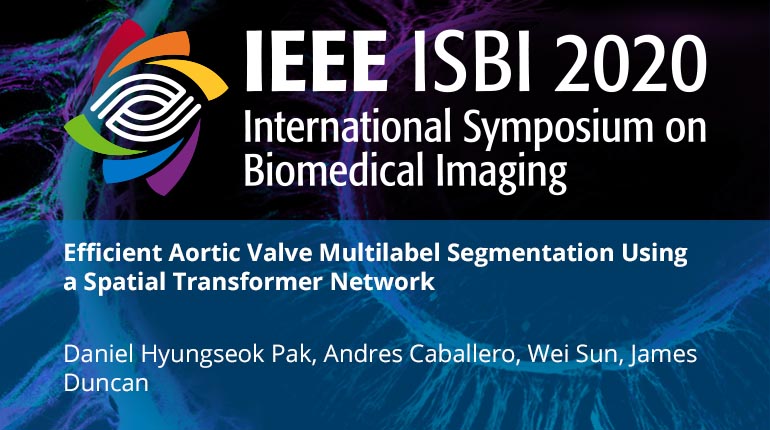
Already purchased this program?
Login to View
This video program is a part of the Premium package:
Efficient Aortic Valve Multilabel Segmentation Using a Spatial Transformer Network
- IEEE MemberUS $11.00
- Society MemberUS $0.00
- IEEE Student MemberUS $11.00
- Non-IEEE MemberUS $15.00
Efficient Aortic Valve Multilabel Segmentation Using a Spatial Transformer Network
Automated segmentation of aortic valve components using pre-operative CT scans would help provide quantitative metrics for better treatment planning of valve replacement procedures and create inputs for simulations such as finite element analysis. U-net has been used extensively for segmentation in medical imaging, but naive application of this model onto large 3D images leads to memory issues and drop in accuracy. Hence, we propose an architecture sequentially combining it with a Spatial Transformer Network (STN), which effectively transforms the original image to a consistent subregion containing the aortic valve. The addition of STN improves segmentation performance while significantly decreasing training time. Training is performed end-to-end, with no additional supervision for the STN. This framework may be useful in other medical imaging applications where the entity of interest is sparse, has a fixed number of instances, and exhibits shape regularity.
Automated segmentation of aortic valve components using pre-operative CT scans would help provide quantitative metrics for better treatment planning of valve replacement procedures and create inputs for simulations such as finite element analysis. U-net has been used extensively for segmentation in medical imaging, but naive application of this model onto large 3D images leads to memory issues and drop in accuracy. Hence, we propose an architecture sequentially combining it with a Spatial Transformer Network (STN), which effectively transforms the original image to a consistent subregion containing the aortic valve. The addition of STN improves segmentation performance while significantly decreasing training time. Training is performed end-to-end, with no additional supervision for the STN. This framework may be useful in other medical imaging applications where the entity of interest is sparse, has a fixed number of instances, and exhibits shape regularity.
 Cart
Cart Create Account
Create Account Sign In
Sign In





